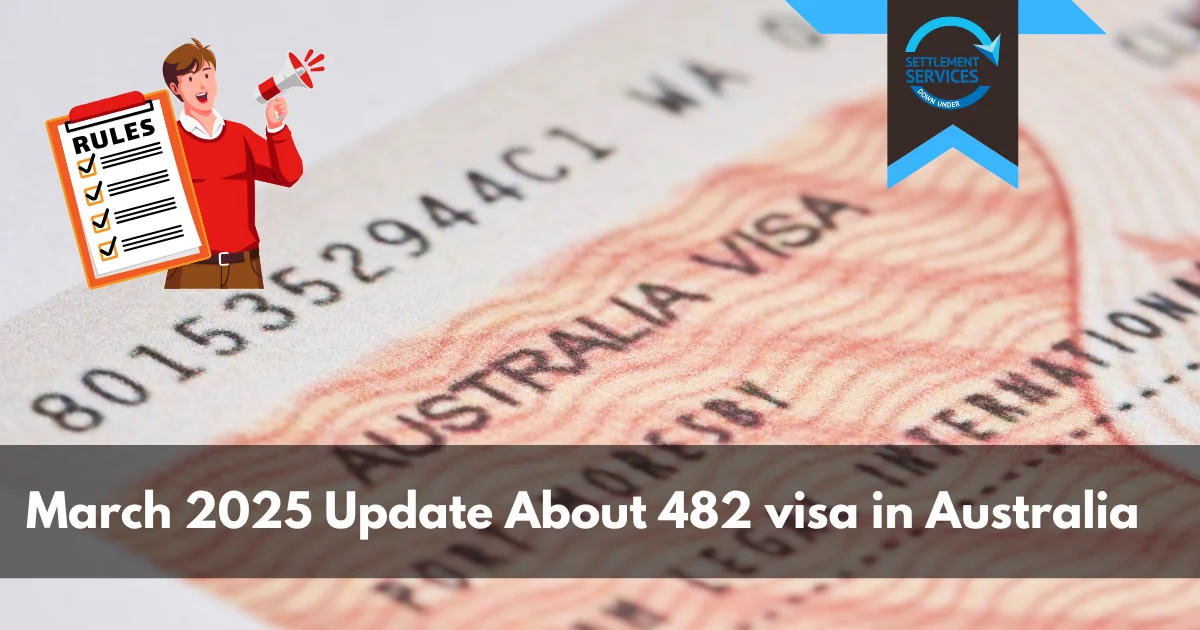As of March 2025, Australia’s Temporary Skill Shortage (TSS) visa, commonly known as the Subclass 482 visa, has undergone significant transformations aimed at addressing the nation’s evolving labor market needs and streamlining pathways to permanent residency for skilled workers. This comprehensive update delves into the latest changes, their implications for employers and prospective migrants, and the broader context of Australia’s immigration landscape.
Introduction to the Skills in Demand (SID) Visa
In December 2024, the Australian government introduced the Skills in Demand (SID) visa, effectively replacing the previous Temporary Skill Shortage (TSS) Subclass 482 visa. This new visa framework is designed to better align with Australia’s current and future labor market requirements. The SID visa encompasses three distinct streams:
- Specialist Skills Stream: Targeted at highly skilled professionals who can contribute significantly to Australia’s economic growth and innovation.
- Core Skills Stream: Aimed at addressing shortages in essential occupations critical to the Australian economy.
- Labour Agreement Stream: For skilled workers nominated by employers who have a Labour Agreement with the Australian government.
Each stream has specific eligibility criteria tailored to meet the unique demands of various sectors within the Australian economy.
Key Changes and Updates
-
Reduction in Work Experience Requirement
Effective from November 23, 2024, the minimum work experience requirement for the SID visa was reduced from two years to one year. This change aims to attract a broader pool of skilled workers by lowering the barrier to entry and expediting the process for applicants to contribute to the Australian workforce.
-
Increase in Temporary Skilled Migration Income Threshold (TSMIT)
On July 1, 2024, the TSMIT was increased from AUD 70,000 to AUD 73,150. This threshold is set to rise again on July 1, 2025, by 4.6%, aligning with the annual Average Weekly Ordinary Time Earnings (AWOTE), bringing the new TSMIT to approximately AUD 76,515. This adjustment ensures that the salaries of skilled migrants keep pace with the earnings of Australian workers, preventing the undercutting of local wages.
-
Pathway to Permanent Residency
As of March 31, 2025, SID visa holders in the Medium-Term stream may be eligible to apply for the Employer Nomination Scheme (ENS) Subclass 186 visa, facilitating their transition to permanent residency. Eligibility criteria include:
- Occupation: Must be on the Medium-Term stream list.
- Work Experience: A minimum of two years with the same employer while holding the SID visa.
- Age: Applicants must be under 45 years of age at the time of application.
- English Language Proficiency: An IELTS score of 6 in each band or equivalent.
This pathway underscores Australia’s commitment to retaining skilled talent and providing clear routes to permanent residency for eligible migrants.
Processing Times and Prioritization
The Department of Home Affairs has updated processing times for the SID visa:
- Core Skills Stream:
- 50% of applications processed in 30 days.
- 90% of applications processed in 47 days.
- Specialist Skills Stream:
- 50% of applications processed in 9 days.
- 90% of applications processed in 39 days.
Skilled visa applications are processed according to government policy priorities, as outlined in Ministerial Direction No. 105. The order of priority is as follows:
- Employer-sponsored visa applications for occupations in designated regional areas.
- Applications for healthcare or teaching occupations.
- Employer-sponsored applications nominated by accredited sponsors.
- Permanent and provisional visa applications contributing to the migration program.
- All other visa applications, assessed in order of lodgement.
This prioritization framework aims to address critical skill shortages and support regional development.
Implications for Employers and Applicants
The recent changes to the SID visa have several implications:
- For Employers: It’s crucial to align salary offerings with the updated TSMIT and ensure that nominated occupations are on the relevant skills list. Early planning and adherence to the new criteria are essential to facilitate successful sponsorships.
- For Applicants: Understanding the specific requirements of each stream and meeting the eligibility criteria, including work experience, age, and English proficiency, is vital for a successful application. The reduced work experience requirement and clearer pathways to permanent residency enhance the appeal of the SID visa.
Broader Immigration Context
The Australian government’s 2025-26 Federal Budget includes measures to gradually reduce net overseas migration to 260,000 in 2024-25, down from peaks in previous years. This reduction reflects a strategic approach to stabilizing migration levels while continuing to prioritize skilled migrants who can contribute to key sectors of the economy.
The March 2025 updates to Australia’s Subclass 482 visa, now the Skills in Demand visa, represent a significant shift towards a more responsive and streamlined skilled migration program. These changes aim to attract and retain the talent necessary to support Australia’s economic growth and address critical labor shortages. Both employers and prospective migrants must stay informed and adapt to these developments to navigate the evolving immigration landscape successfully.






